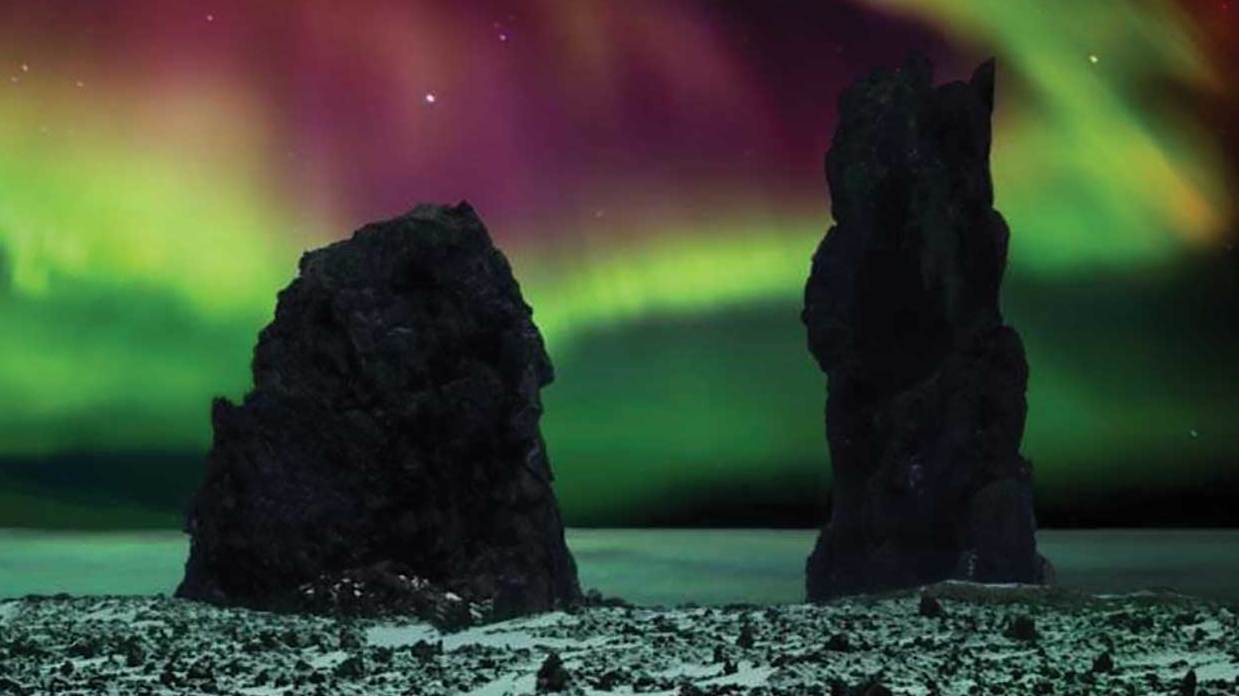Steve Hackett’s name might currently be up in lights as he re-examines his past for his near perennial Genesis Revisited tours, but as he grandstands with songs like Firth Of Fifth, he’s still been quietly putting the hours in on his day job. Two years ago he dazzled with the expansive Wolflight, and he’s been collecting, curating and recording ever since. The last time we saw him he’d stopped by the Prog Magazine Radio Show to talk Genesis, but his heart was elsewhere; he talked like a man who was looking for something else: the next thing. This was still the same guitarist who, while flying high with Genesis, felt so hampered by a lack of creative input that he turned on his heel and walked away. Steve Hackett enjoys the past, and while it’s a nice place to visit, he doesn’t want to get stuck there.
Forward motion, travel, adventure, the ringing endorsement of collaboration and music as a unifying force, they’re all evident on The Night Siren. Hackett jammed in studios and spare rooms, across different continents; he made musical jigsaws out of the files that appeared in his email. Which could, in less capable hands, lead to an album lacking in cohesion, but there’s something about the scope and ambition here that lends itself to exploration. Sitar sits happily alongside folk guitar, a didgeridoo floats past, there’s even room for Uilleann pipes.
Hackett’s evident ease at flitting between styles, textures and sound is still a welcome surprise. Twenty-five studio albums in and he’s still attempting to bring something new to the table. His regular onstage singer Nad Sylvan cameos – alongside band regular Amanda Lehmann – on the lilting Inca Terra, a song inspired by the Peruvian Cloud Forest, because that’s how Mr and Mrs Hackett roll. It floats into sight like something that might have once appeared on a Crosby, Stills & Nash album when they were in their late-60s pomp, before peeling off into a furious, rhythmic meltdown that sounds not unlike Carlos Santana kicking his amps over. On paper that looks like the most unimaginable mess, on record it rises and falls and is daunting in its scope and execution.
Travel, adventure and music as a unifying force…
Hackett’s road diary comes into play for the sublime Fifty Miles From The North Pole, written after the guitarist played a show at that very spot amid a landscape of volcanic rock, towering waterfalls and the enthralling spectacle of the Northern Lights at play on the distant horizon somewhere near the top of the world. The results are, at an expansive seven minutes, as hypnotic as you might imagine. Languid and cool, the guitar parts could have surfaced on an old James Bond movie, before moving to a host of spectral voices – imagine pushing open the door to haunted and disused Victorian school and you’re somewhere close – before the song opens up, as the sparse, freezing landscape must have done. Here’s the sound of Hackett going on an exhilarating tear, attacking his guitar with aplomb as trumpet, didgeridoo and orchestra push to make themselves heard; discordant, threatening and quite exceptional. It’s filled with a seam of rich melody that somehow works against the body of the song while lifting it ever higher, quite the trick if you can make it work like Hackett can.
That it then cedes to El Niño only adds to the album’s lustre. Relatively straightforward in comparison to North Pole or Inca Terra, it still manages to transition from Hitchcock-like foreboding, the haunting strings, the muted trumpet, a sense of danger among the shadows, to a sharp-as-a-tack guitar riff that glides seamlessly over the orchestral arrangement below.
The flamenco-infused Anything But Love could have appeared on any one of Eric Clapton’s platinum-era albums (“The guitar part for this was inspired by my love of the Fresh Cream album from Cream,” he admits), the melody’s rich and immediate while the solo is a journey in itself. There’s even a dash of harmonica to add even more colour to the undulating wash of voices as it dashes towards its crescendo.
But let’s end with a nightmare. The creeping In The Skeleton Gallery taps into the psyche of the young Hackett, beset by bad dreams, chased through the dusty passages of a long abandoned house, something just behind you, something just out of sight, the song slithers and moans before falling hard among the wailing of clarinet and saxophone and the off-key hum of a musical box brought eerily to life.
Almost every artist will tell you that their latest work is their best and Hackett is no exception: “In terms of spirit, production and drive I think this might well be the best album I have done. There are no troughs at all, just a succession of peaks.”
That’s as maybe, decide for yourself, but if you do one thing then take the opportunity to hear The Night Siren sing.

